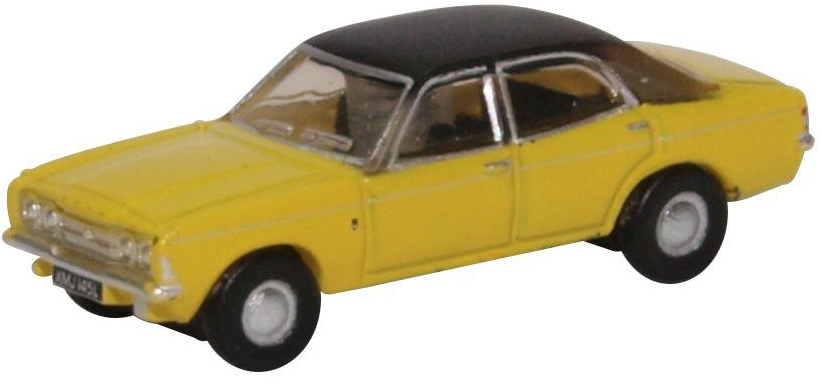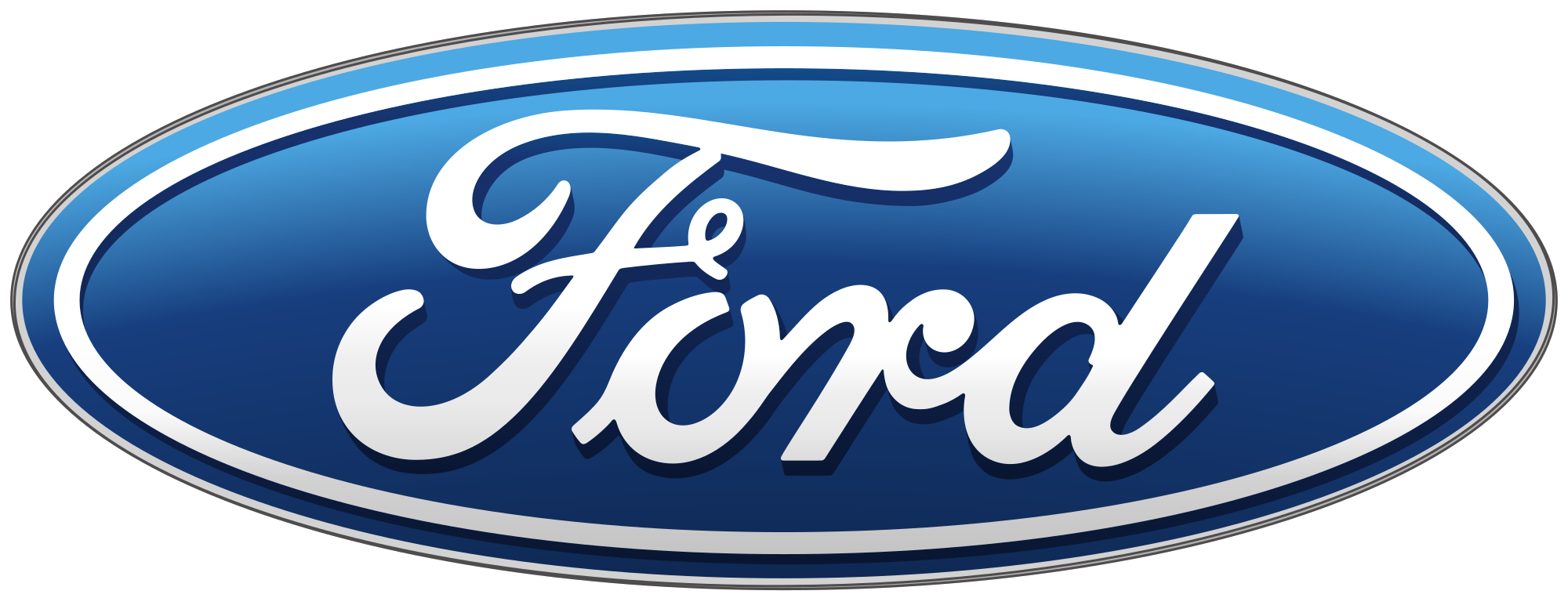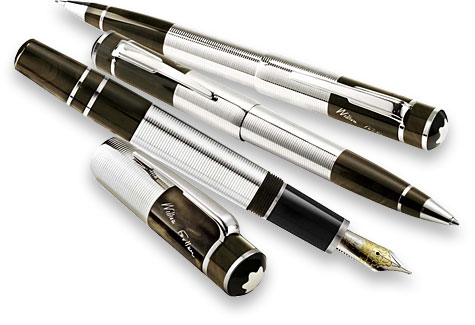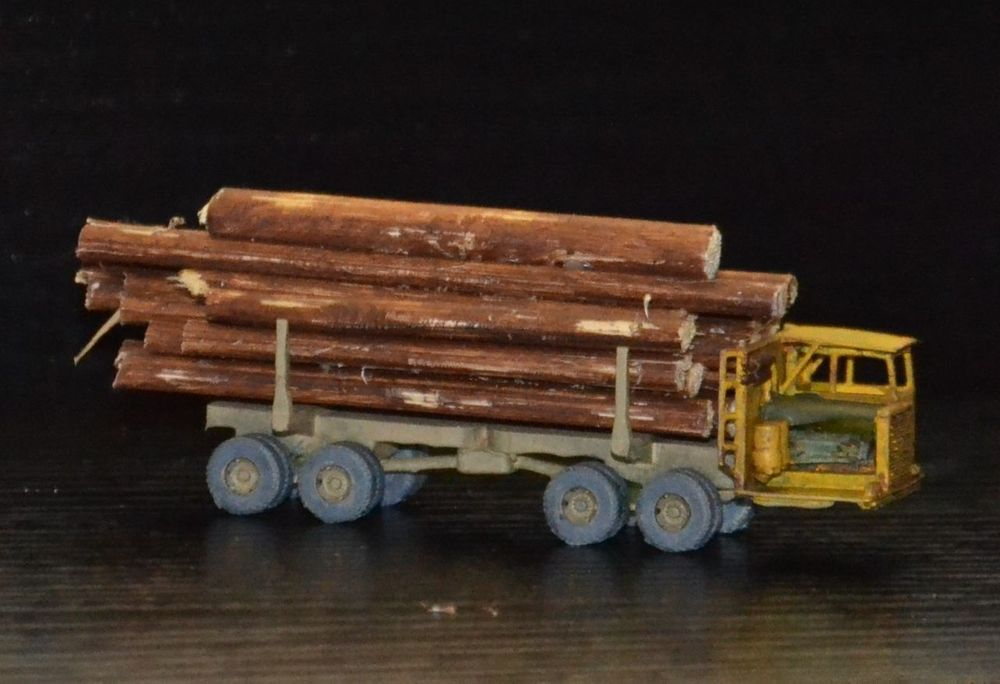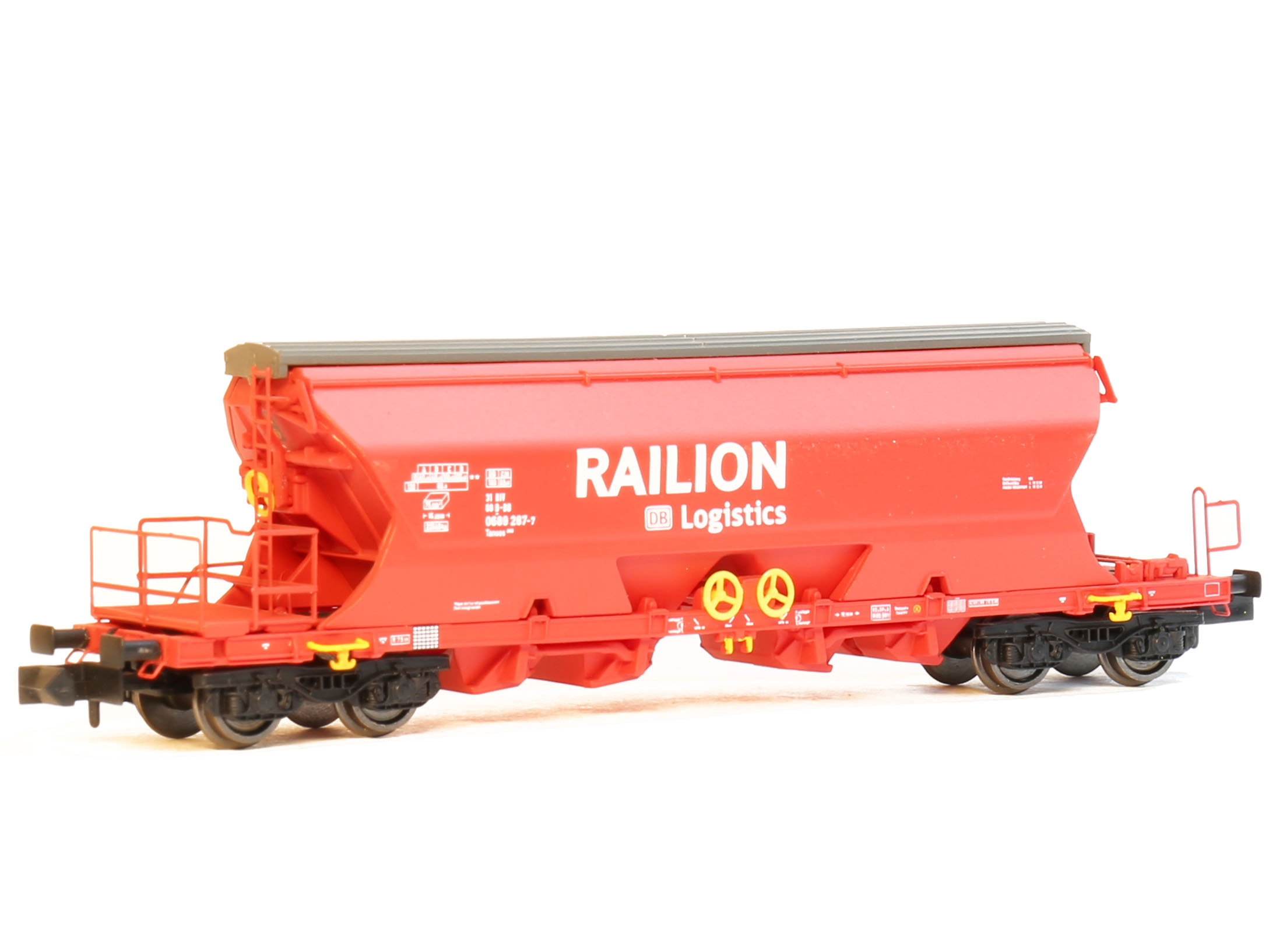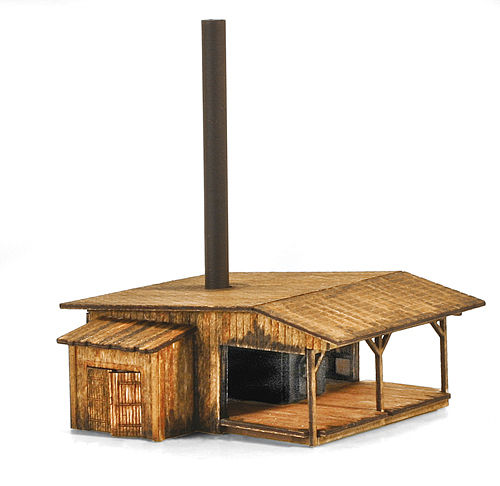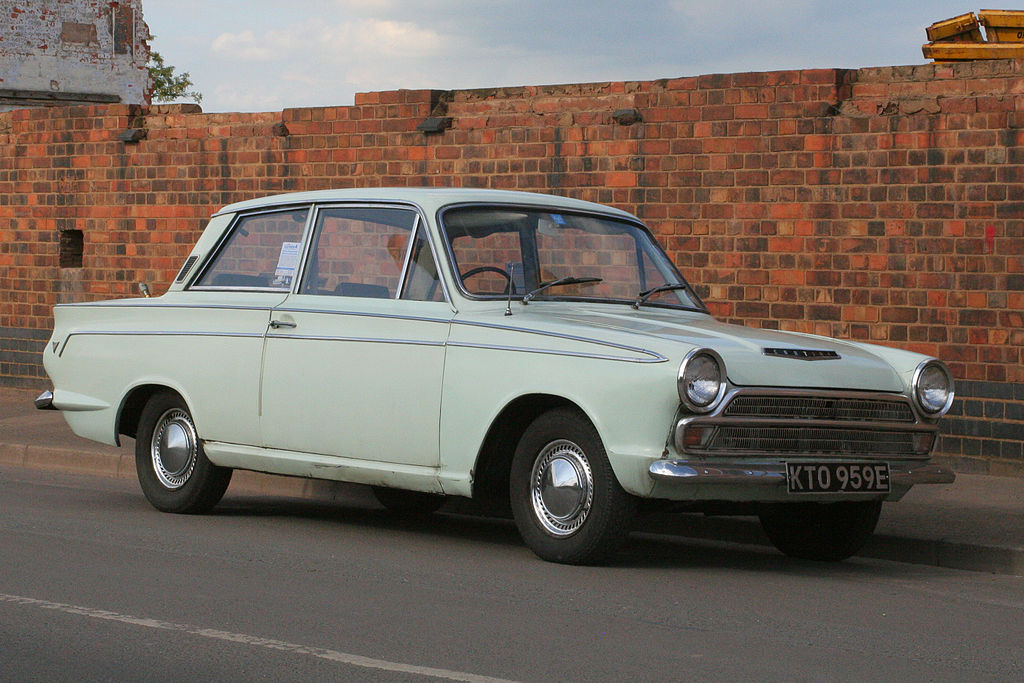Specific Item Information: The 3rd generation Ford Cortina Mk III was manufactured between 1970 and 1976 by the Ford Motor Company. Also a part of Oxford’s 1:76 scale series of classic cars, here we see the zappy little motor in exactly the same detail, decorated in striking bright yellow with black roof and black interior, registered XMJ 145L from 1974/75.
Model Information: Factory painted and assembled, the Oxford Diecast line of metal vehicle models are 1:148 (British) N-Scale.
Prototype History: The Ford Cortina is a car that was built by Ford of Britain in various guises from 1962 to 1982, and was the United Kingdom's best-selling car of the 1970s.
The Cortina was produced in five generations (Mark I through to Mark V, although officially the last one was only the Cortina 80 facelift of the Mk IV) from 1962 until 1982. From 1970 onward, it was almost identical to the German-market Ford Taunus (being built on the same platform) which was originally a different car model. This was part of a Ford attempt to unify its European operations. By 1976, when the revised Taunus was launched, the Cortina was identical. The new Taunus/Cortina used the doors and some panels from the 1970 Taunus. It was replaced in 1982 by the Ford Sierra. In Asia and Australasia, it was replaced by the Mazda 626–based Ford Telstar, though Ford New Zealand did import British-made CKD kits of the Ford Sierra estate for local assembly from 1984.
The name was inspired by the name of the Italian ski resort Cortina d'Ampezzo, site of the 1956 Winter Olympics. As a publicity stunt, several Cortinas were driven down the Cortina olympic bobsled run at the resort which was called Cortina Auto-Bobbing.
The Cortina was produced in five generations (Mark I through to Mark V, although officially the last one was only the Cortina 80 facelift of the Mk IV) from 1962 until 1982. From 1970 onward, it was almost identical to the German-market Ford Taunus (being built on the same platform) which was originally a different car model. This was part of a Ford attempt to unify its European operations. By 1976, when the revised Taunus was launched, the Cortina was identical. The new Taunus/Cortina used the doors and some panels from the 1970 Taunus. It was replaced in 1982 by the Ford Sierra. In Asia and Australasia, it was replaced by the Mazda 626–based Ford Telstar, though Ford New Zealand did import British-made CKD kits of the Ford Sierra estate for local assembly from 1984.
The name was inspired by the name of the Italian ski resort Cortina d'Ampezzo, site of the 1956 Winter Olympics. As a publicity stunt, several Cortinas were driven down the Cortina olympic bobsled run at the resort which was called Cortina Auto-Bobbing.
Road Name History: 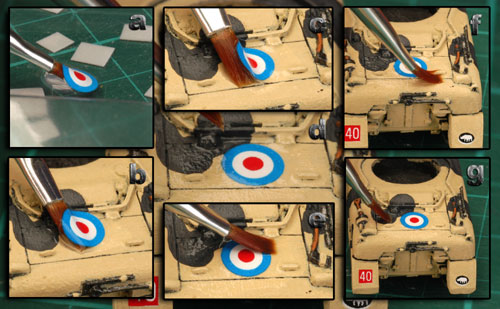 Some items are designed to have their owner add whatever company marking they choose, usually in the form of decals or dry-transfers. These items are painted in a generic prototypical fashion but with all company affiliation deliberately left off.
Some items are designed to have their owner add whatever company marking they choose, usually in the form of decals or dry-transfers. These items are painted in a generic prototypical fashion but with all company affiliation deliberately left off.

Manufacturer Information: Established in 1993, Oxford Diecast is a British Company that specializes in high-quality die-cast metal vehicles. Produced in various scales, the firm's models are marketed as collector items, gifts, and promotional products. Their largest production goes to OO scale (1:76) and in 2015 they introduced railway products under 'Oxford Rail' brand.
Their N-scale collection is using the 1:148 scale ratio as most British manufacturers.
Their N-scale collection is using the 1:148 scale ratio as most British manufacturers.
Item created by: CNW400 on 2019-12-23 19:06:16. Last edited by CNW400 on 2020-05-12 13:34:31
If you see errors or missing data in this entry, please feel free to log in and edit it. Anyone with a Gmail account can log in instantly.
If you see errors or missing data in this entry, please feel free to log in and edit it. Anyone with a Gmail account can log in instantly.


